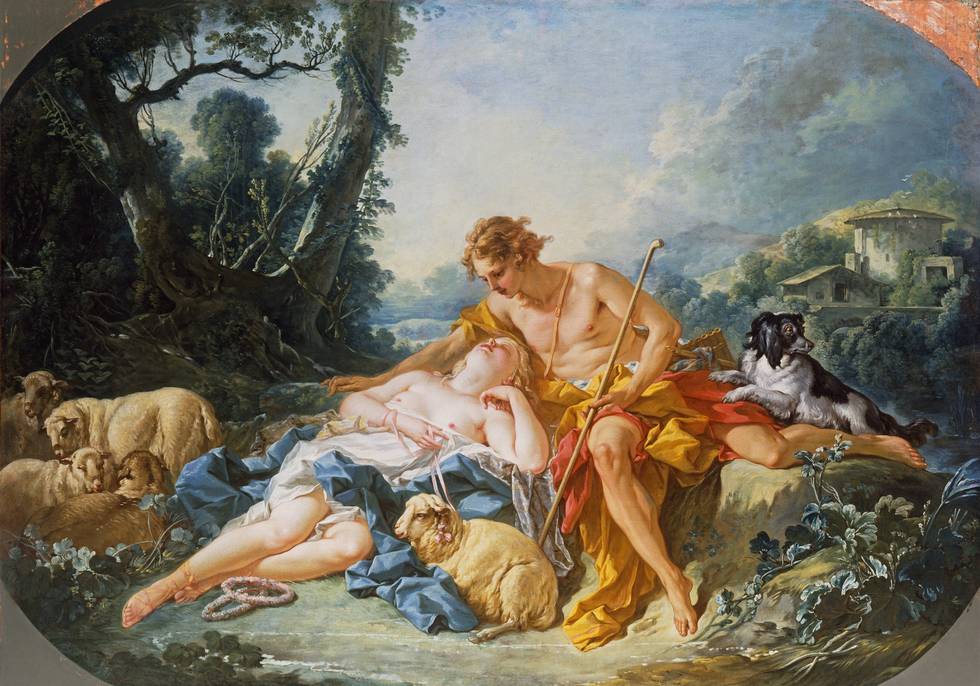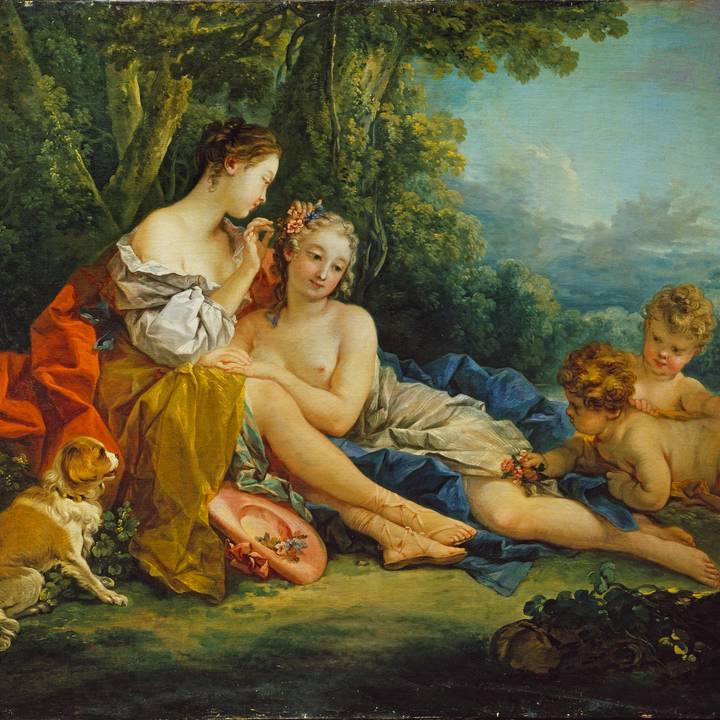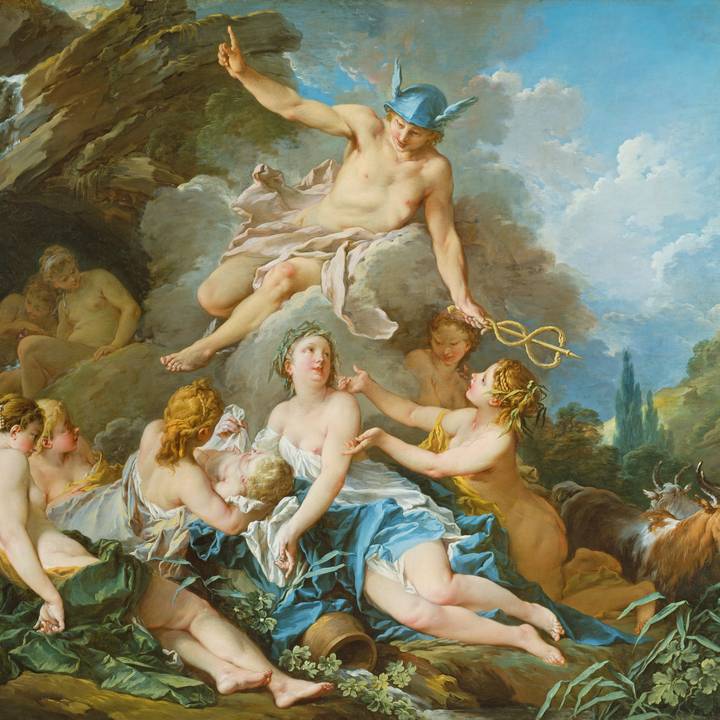Date: 1743
Materials: Oil on canvas
Measurements: 109.5 x 154.8 cm
Inv. No: P385
The story of Daphnis and Chloe centers on two infants abandoned at birth, who are raised by shepherds on the island of Lesbos. Growing up side by side, they gradually come to understand and embrace their love for each other.
Along the way, they encounter numerous challenges, from abductions and jealousy to their own inexperience in matters of the heart.
With guidance from pastoral deities like Pan, they learn the mysteries of love, remaining devoted throughout. In the end, they discover their noble lineage, and with their families' approval, they marry, uniting their love with their newly reclaimed heritage.

The concept of the pastoral, which idealises rural life and depicts shepherds in an idyllic setting, has roots in ancient literature and saw renewed popularity since the Renaissance.
Antoine Watteau, for example, developed a distinctly Parisian take on the pastoral, depicting fashionable young people dressed in modern attire.
Boucher, familiar with Watteau's work from his early years as an engraver, began painting pastorals in the mid-1730s and evolved a unique style.
Boucher's scenes often feature graceful shepherds and shepherdesses, dressed simply yet elegantly and engaging in refined, romantic courtship. Daphnis and Chloe is unusual for its partially nude figures and openly sensual tone.
Due to its classical atmosphere, the painting is linked to the pastoral romance Daphnis and Chloe by the Greek author Longus.
The central figures in the painting closely resemble a bronze sculpture (lost, last documented in 1912) thought to be by a seventeenth-century Italian artist, a version of which may have been available to Boucher.
If so, this would be a rare instance of Boucher modeling a painting after a sculpture. Existing compositional drawings and figure studies suggest that he might have begun with the bronze group’s composition and later refined the figures with live models.
The final drawing diverges from the sculpture, possibly completed after the painting itself. The artwork was later trimmed; its original, rounded edges suggest it was intended as part of a decorative scheme, perhaps as an overdoor element.



